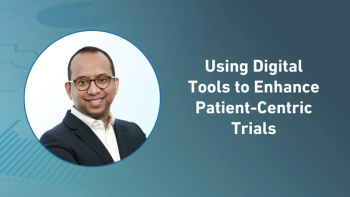
The Evolution of Patient-centric Technology for Clinical Research
A look at what patient centricity in clinical research means and how it has evolved.
What does “patient centricity” mean? The term is used to suggest ways of improving patient outcomes, but how do you make patient-centric care tangible in clinical research? To me, patient centricity must infuse every part of your company’s culture-from employees to technology solutions.
Sites communicate with patients every day, and do a very good job of it, but with proper trial design and technology, trials can offer better opportunities for two-way communication with patients to engage with their own data and get feedback on their contribution to their trial and their own health. I view this as a powerful motivator for trial recruitment, compliance, and retention. Most importantly, it demonstrates to patients the value of their participation in clinical research. It’s this evolution in care that I’m most excited about in 2019 and beyond.
The way we talk about patient centricity in clinical research has evolved. What was once a focus on trial feasibility and patient allocation, has expanded to include patient burden. Not only do we want to make sure patients have access to a trial best-suited for their disease, we want the trial designed with their needs in mind.
Much of this patient-centric evolution can be attributed to technological advancements that bring the clinical trial experience outside of traditional investigation sites and into the real world where patients actually live. Sponsors are investing to better understand the patient burden of a trial experience, and to actively reduce that burden during study design. Do we need to bring a patient in to a hospital for study visits? Or can we meet the patients where they are-their home, their workplace, or wherever is most convenient for them? The focus should be a frictionless clinical trial that doesn’t stop a patient from living their life.
From this perspective then, a patient-centric trial-in a real, tangible way-is one that is a virtual trial, which I define as a trial with any data activity outside of a site. Whether it’s an ePRO app, or an eConsent form a patient can review and sign at home, virtual trials bring the trial experience to where it’s most convenient and comfortable to patients. Perhaps more importantly, virtual trials give patients more opportunities to engage with their own health data and with their healthcare team.
Virtual trials is not a new concept; ePRO has been in the market for nearly 20 years. But we’re moving in a direction where 20% of studies could soon be largely virtual, and 80% of studies will have at least one virtual component in the protocol.
ePRO tools may be the easiest entry into trials virtualization, but we’re seeing the industry moving at light speed into new trial designs that incorporate more tools with patient needs in mind. Technology should be available for every stage of the patient journey, from education and consent to data capture and analysis. Patients should have the opportunity to be completely engaged in the research process from start to finish.
If ePRO is the old guard of virtual trials, sensors and wearable tech are the new kids for clinical research. Every day sponsors discover new wearables they want to use. As an industry, we need to be able to react rapidly to ingest this sensor data, analyze it, and distribute it around the world in user-friendly reports. When implemented correctly, sensors offer a clear path forward for virtualizing clinical trials.
As I mentioned above, to enable patient-centric experiences, technology must be used as a service delivery mechanism. Technology such as eConsent falls squarely into the camp of patient-centric tools that help communicate with the patient. For example, eConsent opens the doors to informational videos and other types of animations that help explain what patients are consenting to when they agree to participate in clinical research. Without proper understanding and consent, trials are at risk of losing patients who are not compliant to the trial protocols, or who may just drop out because they didn’t understand the conditions of the study.
Patients aren’t professional data managers, and if they are going to interact more directly with data capture tools, we need to build different kinds of solutions to navigate the clinical trial experience. Patient-centricity is a two-way conversation. When patients give data on an app, we should be giving information back to help them understand their part in the trial. Patients strongly value good communication with their doctors and nurses, and trials need to be designed with the right tools to accomplish the same.
Jackie Kent, SVP, head of product, Medidata
Newsletter
Stay current in clinical research with Applied Clinical Trials, providing expert insights, regulatory updates, and practical strategies for successful clinical trial design and execution.





.png)



.png)



.png)
.png)
